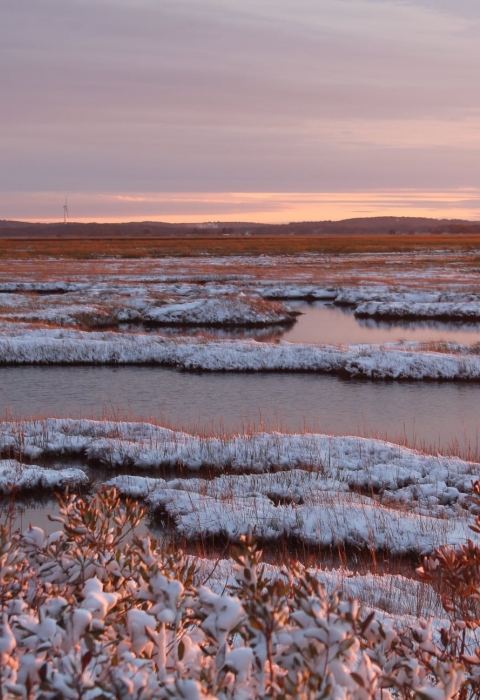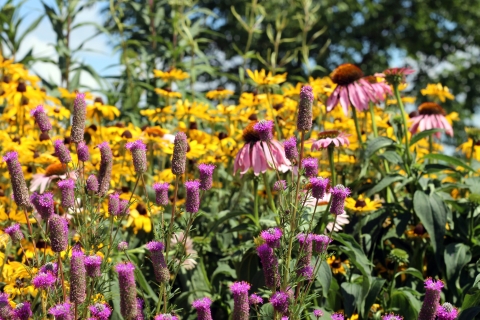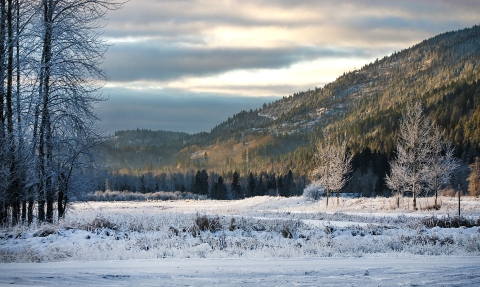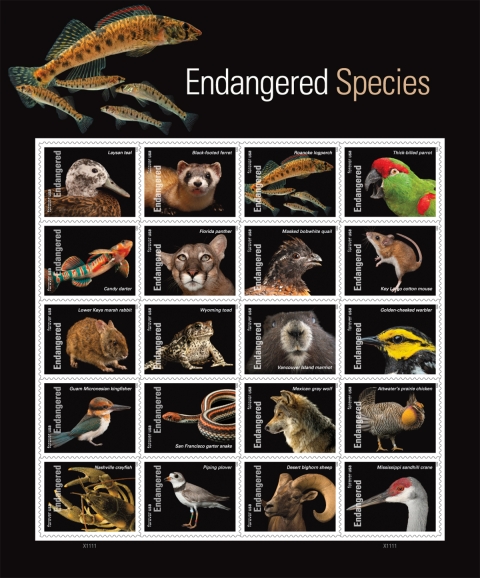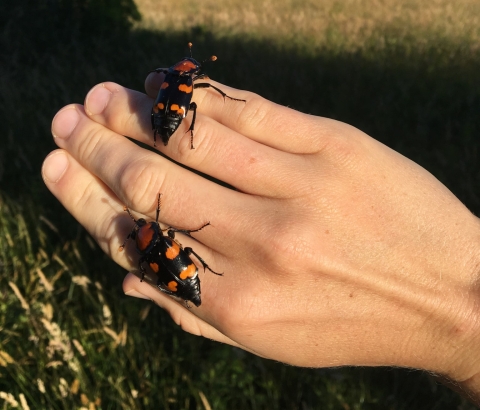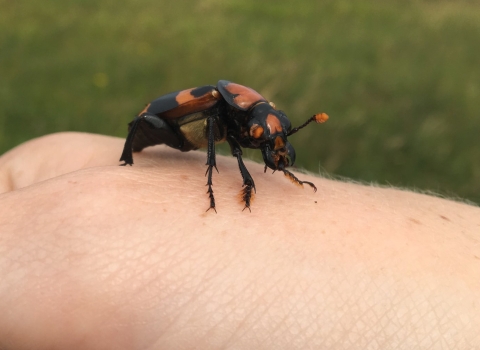Ah, a new year! A blank page to start afresh. Swapping out the calendar inspires many of us to resolve to make changes to our habits and lifestyles and become “better versions” of ourselves. But jeez, those New Year’s resolutions can be hard to keep.
A mentor once said, “If you want a specific someone to come to your party, ask them to bring the potato salad.” It’s easy to flake when you’re the only one impacted by your decisions, but if the potluck will be missing a key dish due to your absence — well, you better be there and on time!
What if we applied similar logic to maintaining a New Year’s resolution? Consider expanding your goal to not only better yourself but also help others — now they’re counting on your success.
Sure, you could get a running buddy, but why not raise the stakes even more? You need something truly inspiring and motivating. Something that could contribute to a better world for years, even centuries, such as ... protecting wildlife!
There are more than 1,400 species protected under the Endangered Species Act in the United States and hundreds more around the world. We have a duty to help protect those we share the planet with — they do so much for us, it’s only fair.
Our non-human Earth-mates make our lives better by pollinating crops, keeping pests and forest debris under control, creating vital habitats, providing clean drinking water — the list goes on. And though large-scale actions certainly move the needle, small changes by individuals can add up to make a difference.
Are you in?
Add a California condor and Florida panther to your vision board, and commit to using your New Year’s resolution to help protect endangered species and other wildlife! Here are some ideas.
Resolution #1: Refresh your living space
Out with the old and in with the new! There’s nothing quite as energizing as updating your home’s aesthetic. Whether you’re just rearranging furniture or knocking down walls, there are decisions you can make to benefit the wildlife in your neck of the woods, such as:
- Revamp your windows with bird-safe window decals. Collisions with residential windows kill nearly one billion birds every year. Add decals or specialized curtains to your shopping list to prevent any feathered friends from colliding with your home. Choosing motion-activated outdoor lights or installing timers will also help prevent window strikes.
- Plant a pollinator garden. Imagine an oasis with colorful flowers, bumblebees and butterflies, just a few steps from your front door. Pollinators are crucial for agriculture and help wild landscapes flourish, yet they’re experiencing significant declines. Fill your pollinator garden with a variety of native species, like milkweed and wildflowers, that will provide these fluttering creatures with nectar throughout the summer and fall.
Resolution #2: Practice mindfulness
In a busy world, where there’s so much vying for our attention, practicing mindfulness and reducing stress is a great resolution to add to your list. The added bonus for nature is that being present and noticing the little things helps us connect with and feel drawn to protect the living things around us.
Try walking outdoors and leaving your worries at the trailhead. Take time to notice nature’s details, like a salamander crawling in leaf litter on the forest floor, the pattern in a tree’s bark or the rhythm of a bird’s song.
There are many tiny endangered species, like the lesser long-nosed bat, dusky gopher frog, Oahu tree snail and fanshell mussel, that can be easily overlooked — literally and figuratively. Through our awareness, our appreciation expands, allowing us to more thoughtfully consider questions such as: “Why does it matter if freshwater mussels disappear?” (Answer: Freshwater mussels keep our rivers clean by filtering out harmful algae, bacteria and fine particulates. They are the livers of the rivers!)
Let these answers inspire your conservation efforts and act as your North Star, reminding you why this work is so critical.
Resolution #3: Reconnect with friends and family
Maybe you moved away or just haven’t had the time to pick up the phone. There’s no moment like the present to reach out to those you care about.
How about sending a friendly letter in the mail? Help endangered species by being choosy about which stamps you use. Proceeds from “Tiger Stamps” directly fund international wildlife conservation projects, and the Endangered Species Act 50th Anniversary stamps are great for spreading awareness. With twenty featured animals to pick from, you’ll have great fun assigning stamps. Dear friend, have I ever mentioned that you remind me of a Key Largo cotton mouse?
Resolution #4: Travel
Maybe you’ve been dreaming of seeing the world, or even just more of the states. You might already have a list of national parks on your bucket list, but how about adding some of our national wildlife refuges to your road trip plans?
Often less crowded, refuges protect wildlife habitat, as well as offer great recreational opportunities. And you won’t have to travel far, because there’s a national wildlife refuge in every state!
While on your travels, you can support species conservation by purchasing an annual Duck Stamp, which provides free admission to any refuge that charges an entrance fee for one year. Duck Stamps can be purchased at major sporting goods stores, post offices and even some national wildlife refuges and are a great way to support conservation — 98% of the purchase prices goes directly to conserving wetland habitat! While these stamps are required for all waterfowl hunters, they also make excellent gifts for all wildlife enthusiasts! See more of our country’s natural beauty AND support species conservation? Seems like a win-win.
Resolution #5: Start a new hobby
What do you like to do for fun? If you don’t have an easy answer to this question, then this is the year for you to try a new hobby! Fortunately, there are a bunch of activities that lend themselves to helping wildlife, like:
- Sculpture art: Pick up beach trash and create a recycled art sculpture! Use it as a statement piece to encourage others to reduce the amount of trash they produce and help protect wildlife that accidentally eats or gets caught in marine debris.
- Fishing: Start by purchasing a fishing license and learning your local regulations, which help maintain healthy fish populations. Once you’ve got that mastered, consider fishing for invasive species invasive species
An invasive species is any plant or animal that has spread or been introduced into a new area where they are, or could, cause harm to the environment, economy, or human, animal, or plant health. Their unwelcome presence can destroy ecosystems and cost millions of dollars.
Learn more about invasive species , such as northern snakehead. Removing them from bodies of water leaves more space for native creatures to thrive. - Woodworking: Grab your screw gun and miter saw to build a bat box for your yard. With so many bats suffering from white-nose syndrome, a clean bat box will be a welcome, safe place for them to raise their young.
- Birding: Once you're able to put a name to most feathered faces, you can help endangered species by participating in community science, like a bird count, which crowd-sources data for researchers who are monitoring global bird populations.
Resolution #6: Learn something new every day
With so much information available, you could spend a lifetime soaking it all in. If your goal for the coming year is to spend time learning every day, why not explore our collection of endangered species features? We’re regularly adding and updating stories to keep interested readers, like you, in the know!
Up the accountability factor by adding a commitment to share what you’re learning with family, friends, coworkers, social media lurkers and whoever else you run into. Have fun with it! At a baby shower? You might let it slip that American burying beetles are coparenting goals...
Celebrating the Endangered Species Act
On December 28, 1973, Congress enacted the Endangered Species Act — a resolution of sorts — to protect and conserve threatened and endangered species, as well as their habitats. Since it was established, the act has saved hundreds of species, including the bald eagle, American alligator and peregrine falcon.
Like the Endangered Species Act, we can each make a commitment to a better world, one in which all creatures — big and small — can live within flourishing ecosystems and aren’t at risk of being lost forever. We are all connected in this web-of-life, and helping other species creates a healthier world for everyone.
This year, consider your role and make decisions that support endangered species conservation. With a New Year’s resolution that is bigger than yourself, this could be your best year yet!
